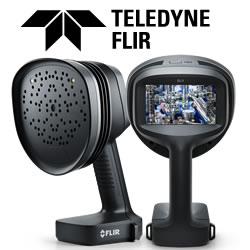NDSU Students Develop 3D Printing Self-Replicating Robot
A team of students at the North Dakota State University have completed a key step in the development of a robot that is able to make a replica of itself.
Fargo, ND, July 19, 2017 (Newswire.com) - A team of students at the North Dakota State University have completed a key step in the development of a robot that is able to make a replica of itself. Self-replicating robots are key to long-duration exploration of other planets. They also have numerous industrial, military and other uses.
"The potential exploration and other uses of self-replicating robots are significant," commented NDSU Assistant Professor of Computer Science Jeremy Straub, who is overseeing the project. "With the use of in-situ materials, there is a potential to make numerous copies of an initial set of robots and greatly expand the work-performance capabilities of the robotic team. Replacement parts can also be produced to return damaged units to service."
By producing robots in-situ, materials brought to a planet for exploration or a region of Earth for military or exploration use can go much further, producing ten times or more units, as compared to shipping ready-to-use units. The current design utilizes a number of metal and electronic components that cannot be produced in-situ. A long-term goal of the project is to minimize the number of components that must be externally supplied and limit how many robots can be replicated. This reduction will allow even more units to be produced from a given mass and volume of initial supplies.
"Its been a challenging experience for the team. A lot of interdisciplinary cooperation has contributed to our progress so far," said NDSU Software Engineering Ph.D. student Andrew Jones. Andrew is leading the student team and working on this topic for his Ph.D. dissertation. "Making something that can make something as complex as itself adds another level of complexity."
The project, which was supported by the NDSU Office of Research and Creative Activity, has involved students from NDSUs Computer Science, Electrical Engineering, Mechanical Engineering and Industrial Engineering departments. Initial work on this project was documented in an article in the MDPIs Machines journal entitled "Concepts for 3D Printing-Based Self-Replicating Robot Command and Coordination Techniques," authored by Jones and Straub. The concepts documented in this article have been advanced by the recently completed work.
This work builds on Straubs prior work in other related areas including quality assurance of 3D printing and cybersecurity for 3D printing. A deployed self-replicating robot would require these capabilities for mission success.
About NDSU Computer Science
The NDSU Computer Science Department was founded in 1988 (though computer science courses were offered as part of Mathematical Sciences since 1973). It occupies 7,460 square feet and has approximately 600 graduate and undergraduate student majors.
Featured Product

FLIR Si1-LD - Industrial Acoustic Imaging Camera for Compressed Air Leak Detection
The FLIR Si1-LD is an easy-to-use acoustic imaging camera for locating and quantifying pressurized leaks in compressed air systems. This lightweight, one-handed camera is designed to help maintenance, manufacturing, and engineering professionals identify air leaks faster than with traditional methods. Built with a carefully constructed array of MEMS microphones for high sensitivity, the Si1-LD produces a precise acoustic image that visually displays ultrasonic information, even in loud, industrial environments. The acoustic image is overlaid in real time on a digital image, allowing you to accurately pinpoint the source of the sound, with onboard analytics which quantify the losses being incurred. The Si1-LD features a plugin that enables you to import acoustic images to FLIR Thermal Studio suite for offline editing, analysis, and advanced report creation. Field analysis and reporting can also be done using the FLIR Acoustic Camera Viewer cloud service. Transferring of images can be managed via memory stick or USB data cable. Through a regular maintenance routine, the FLIR Si1-LD can help facilities reduce their environmental impact and save money on utility bills.
